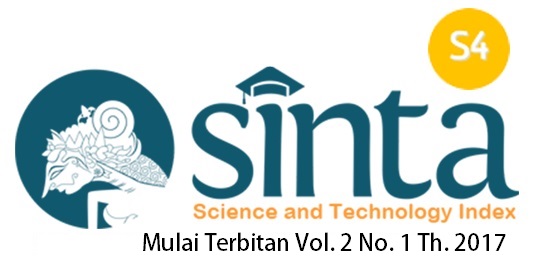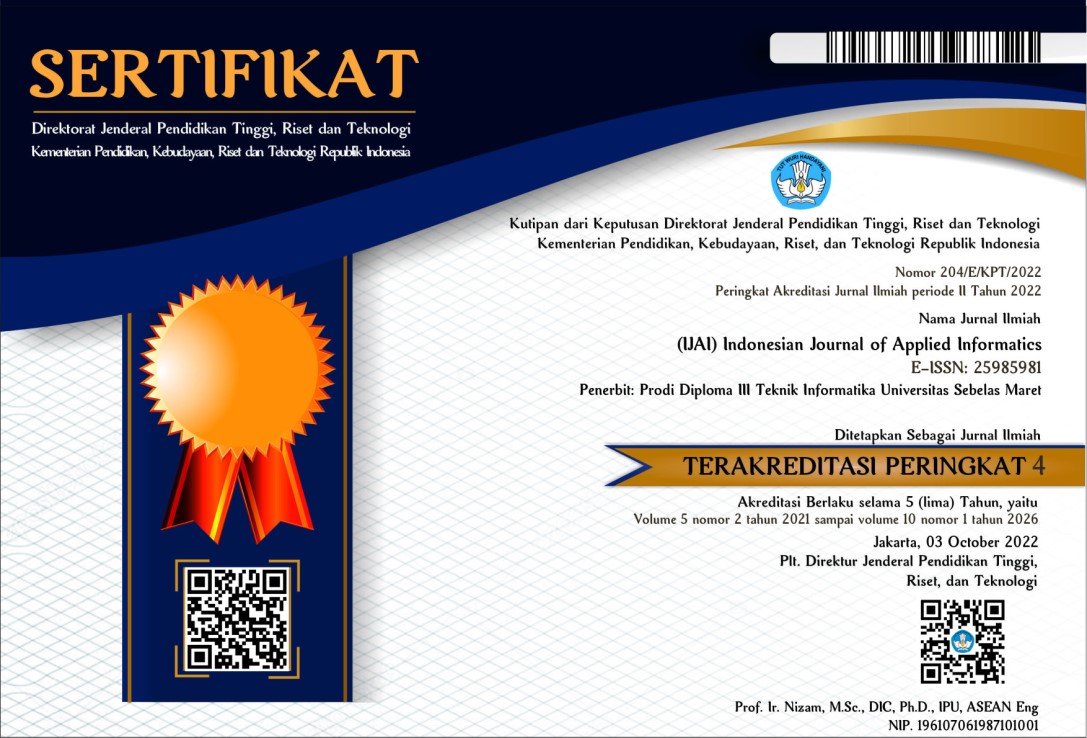Implementasi Data Mining Penjualan Produk Pakaian Dengan Algoritma Apriori
Abstract
The problem faced by the Tanjung Redjo clothing store is the lack of management of sales data and irregular arrangement of clothing products. The arrangement of the location of clothing products on the shelf is not well regulated. The speed of service to customers can be improved by making the layout of clothing products good and orderly, so that store staff can find clothing products quickly. Shoppers can also search and view apparel accessories that are often sold together quickly, potentially increasing store sales turnover. A better and more organized arrangement of clothing products can be done by analyzing sales transactions that occur daily at the store by using the Apriori algorithm. By using this algorithm, the shop owner can find out the tendency of a combination of clothing products that are often sold at the same time, so that the shop owner can arrange the layout of clothing products well and regularly so that buyers or employees can find and retrieve clothing products quickly. How the Apriori algorithm works to find a combination of clothing products that are often sold simultaneously from a sales transaction. Rules applied If buying KA-701 and KK-201 and SP-2001, then buy ST-651. Support and Confidence values are calculated until 4 combination items are obtained to get the best selling associative rule output output.
Keywords
Full Text:
PDFReferences
Dwi, O. & Hajjah, A. 2019. Perancangan Sistem Penjadwalan Seminar Proposal Dan Sidang Skripsi Dengan Metode Algoritma Genetika. JOISIE Journal Of Information System And Informatics Engineering. Vol. 3, No.1. Hlm 32-40.
Mulyana, H. 2014. Pemakaian Metode Asosiasi Dalam Data Mining Untuk Penjualan Lebih Dari Satu Jenis Produk Pada Perusahaan, Jurnal Pilar Nusa Mandiri, Vol.X No.1, hal 47-56.
Sikumbang, E. D. 2018. Penerapan Data Mining Penjualan Sepatu Menggunakan Metode Algoritma Apriori. Jurnal Teknik Komputer Vol 4, No. 1.
Fajrin, A. A. & Maulana A. 2018. Penerapan Data Mining Untuk Analisis Pola Pembelian Konsumen Dengan Algoritma Growth Pada Data Transaksi Penjualan Spare Part Motor. Kumpulan jurnaL Ilmu Komputer (KLIK). Volume 05, No.01.
Sinaga, A. S. 2019. Implementasi OLAP Menggunakan Dashboard Holistics Software Pada LPPM STMIK Pelita Nusantara, Jutikomp, Volume 2 Nomor 1. hal : 55-59.
Sinaga, A. S. RM. 2017. Data Mining Informasi Tingkat Kelulusan Mahasiswa STMIK Pelita Nusantara, Jurnal Manajemen dan Informatika Komputer Pelita Nusantara, hal 27-35.
Sulastri, H. & Gufroni, A. I. 2017. Penerapan Data Mining Dalam Pengelompokan Penderita Thalassaemia. Jurnal Nasional Teknologi dan Sistem Informasi
Syahdan, S. A & Sindar, A. 2018. Data Mining Penjualan Produk Dengan Metode Apriori Pada Indomaret Galang Kota, Jurnal Nasional Komputasi dan Teknologi Informasi, Vol. 1 No. 2. hal: 56-63.
Tamba, S. P. & Kesuma, FT 2019,. Penerapan Data Mining Untuk Menentukan Penjualan Sparepart Toyota Dengan Metode K-Means Clustering, Jurnal Sistem Informasi Ilmu Komputer Prima (JUSIKOM PRIMA), Vol. 2 No. 2, hal: 67-72.
Amalia, H., & Evicienna, E. (2017). Komparasi Metode Data Mining Untuk Penentuan Proses Persalinan Ibu Melahirkan. Jurnal Sistem Informasi, 13(2), 103-109.
Refbacks
- There are currently no refbacks.






